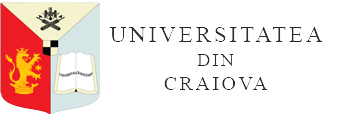QUANTITATIVE ANALYSIS OF NUTRITIONAL BIOACTIVE COMPOUNDS IN IRRIGATED AND NON-IRRIGATED SAFFLOWER (CARTHAMUS TINCTORIUS L.) CULTIVAR CW 4440 ACHENES
DOI:
https://doi.org/10.52846/bihpt.v29i65.138Cuvinte cheie:
safflower, carotenoids, phenolic compounds, ascorbic acid, sugars, oilRezumat
Safflower cultivar CW 4440 was grown on two different water regimes: non-irrigated, and full-dose irrigated. Achenes were harvested and taken for biochemical analyses.
They were found to contain low amounts of carotenoids, 2.38-4.38 mg/kg, with notable amounts of lutein and minor concentrations of xanthins. All carotenoids, except for cryptoxanthin, reached their highest values in irrigated plants, while β-carotene was found in detectable amounts only in irrigated plants. Phenolic inventory, on the other hands, was high compared to known data in literature: 40,627-44,574 mg/kg. Of these, hydroxycinnamic acids were dominant, with 26,023-28,233 mg/kg (63-64%). Flavonoids reached 11,854-13,201 mg/kg (29-30%), including a major fraction of flavanols (1,469-1,595 mg/kg). Stilbenes were another major component, with 2,516-2,750 mg/kg. All the highest values were found in irrigated plants.
Oil content ranged from 6.1% in non-irrigated plants to over 11.7% in irrigated ones. Ascorbic acid content was low (349-756 mg/kg), while soluble sugars were 1,731-2,508 mg/kg.
The concentrations of all these compounds, except for cryptoxanthin, were positively correlated to water dosage. The most affected by irrigation regime were carotenoids, ascorbic acids and oil. The least influenced were phenolic compounds.


